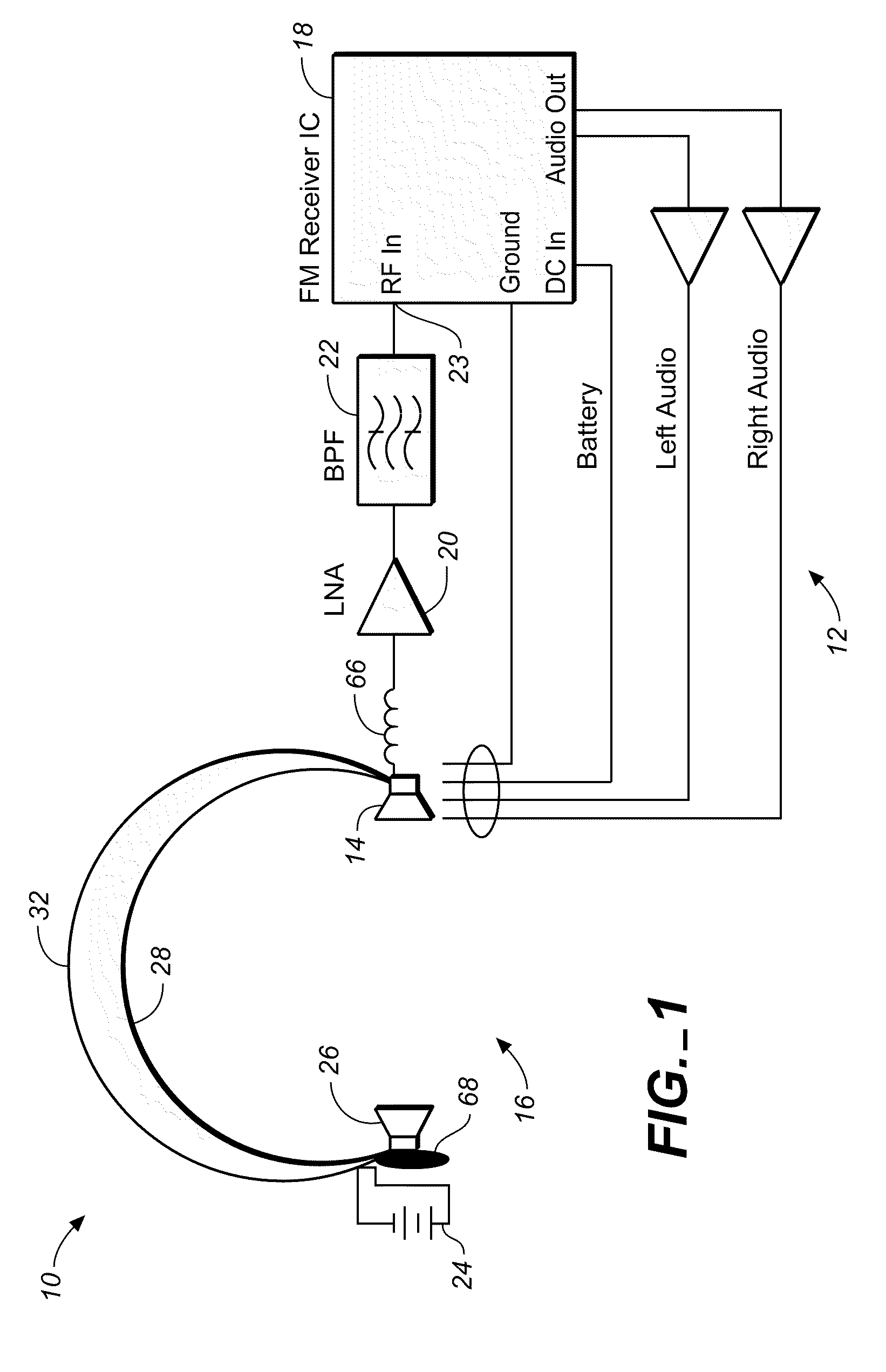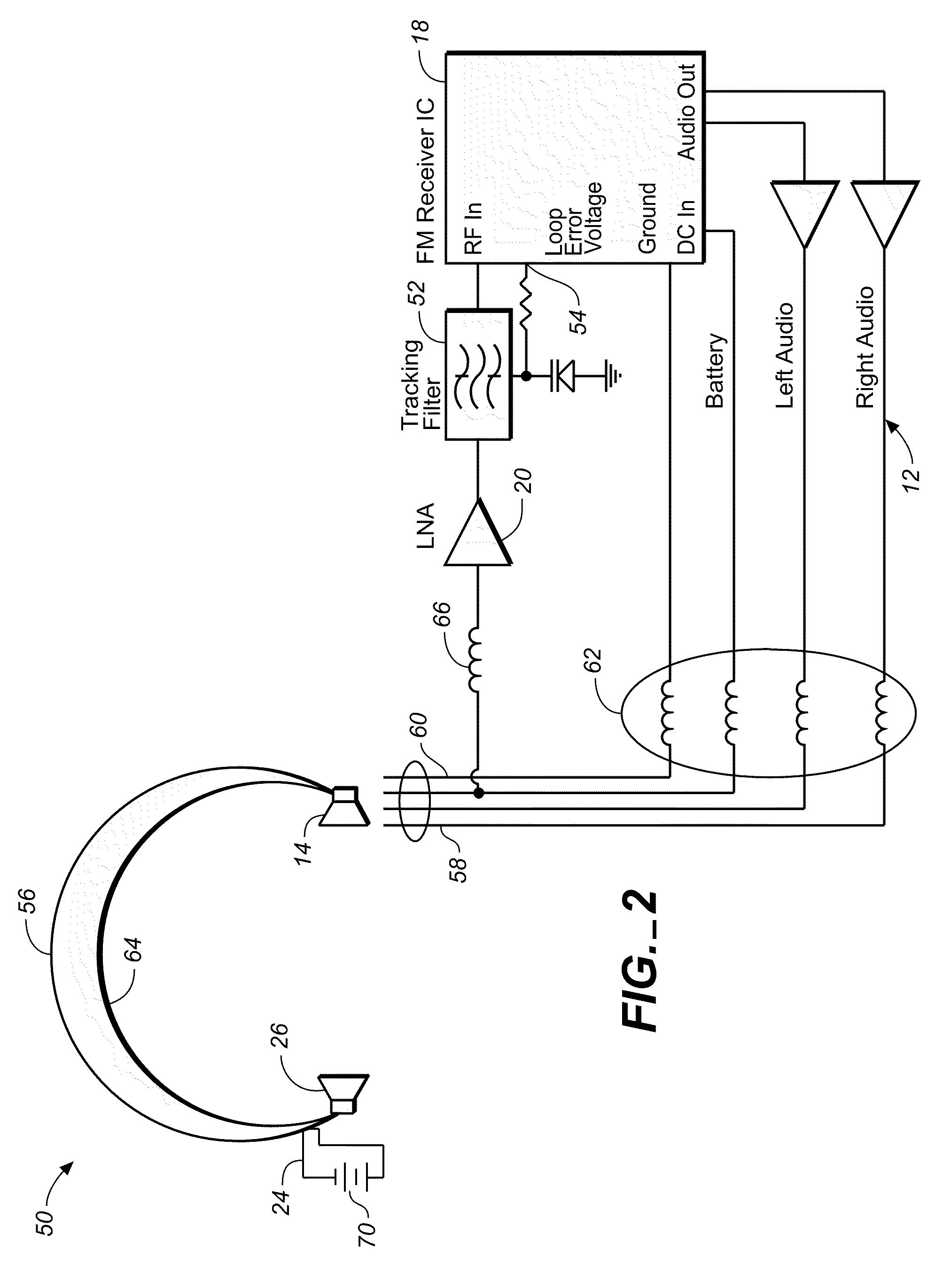Headphone receiver apparatus for use with low power transmitters
a receiver and headphone technology, applied in the field of radio transmitters and receivers, can solve the problems of unsatisfactory performance of known fm receiver headphones when used with low-power fm transmitter products, component cost of achieving increased sensitivity, and poor sensitivity, so as to reduce the loading of other conductors and improve low-noise performance.
- Summary
- Abstract
- Description
- Claims
- Application Information
AI Technical Summary
Benefits of technology
Problems solved by technology
Method used
Image
Examples
first embodiment
[0020]Referring to FIGS. 1 and 2, wherein like reference numerals refer to like components in the various views, FIG. 1 is a schematic view of a headphone receiver apparatus 10 of this invention. Headphone receiver apparatus 10 includes receiver electronics 12 incorporated into a first speaker enclosure or side 14 of headset 16, beginning with a conventional FM receiver IC (integrated circuit) 18 and enhancing performance by connecting a low-noise amplifier 20 and band pass filter 22 to RF In 23. The low-noise amplifier 20 reduces the noise figure of the receiver IC 18 from 9-10 dB (for the IC alone) to about 3 dB. The band pass filter 22, with a bandwidth of about 2 MHz, reduces the number of high-power commercial FM stations the receiver chip 18 sees, thereby improving intermodulation performance. In this embodiment, band pass filter 22 is a fixed tuning lumped element filter tuned to only the portion of the band being used (typically 88.1 MHz to 88.9 MHz). Battery compartment 24 ...
embodiment 50
[0022]FIG. 2 is a schematic view of an alternate embodiment 50 of a headphone receiver apparatus of this invention. This embodiment 50 uses a varactor-tuned tracking filter 52 interposed between low noise amplifier 20 and receiver IC 18, which is capable of being tuned over the entire FM band (i.e., 88 to 108 MHz). Tuning of this filter 52 is derived from the loop error voltage 54 in the receiver's local oscillator phase locked loop.
[0023]This alternate embodiment 50 uses a hard plastic cable / antenna band 56 with a narrow channel along one edge to route a multi-conductor cable 58. One conductor such as the battery return lead (ground) 60 is utilized as the antenna element. This is accomplished by isolating this conductor from ground on the receiver 18 PCB with an isolator 62 such as a series inductor, ferrite bead, or parallel resonant tank circuit. This provides a DC path to ground that is a high impedance at RF. In addition, similar isolation is provided on the other wires in the ...
PUM
 Login to View More
Login to View More Abstract
Description
Claims
Application Information
 Login to View More
Login to View More - Generate Ideas
- Intellectual Property
- Life Sciences
- Materials
- Tech Scout
- Unparalleled Data Quality
- Higher Quality Content
- 60% Fewer Hallucinations
Browse by: Latest US Patents, China's latest patents, Technical Efficacy Thesaurus, Application Domain, Technology Topic, Popular Technical Reports.
© 2025 PatSnap. All rights reserved.Legal|Privacy policy|Modern Slavery Act Transparency Statement|Sitemap|About US| Contact US: help@patsnap.com



